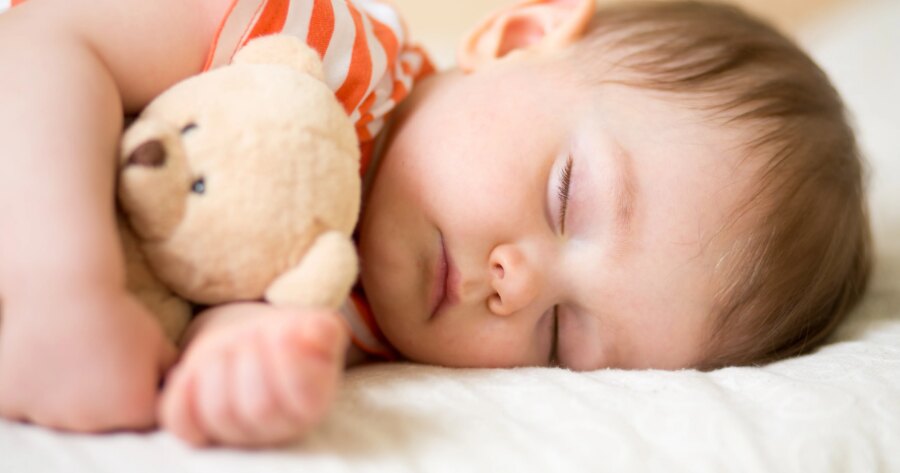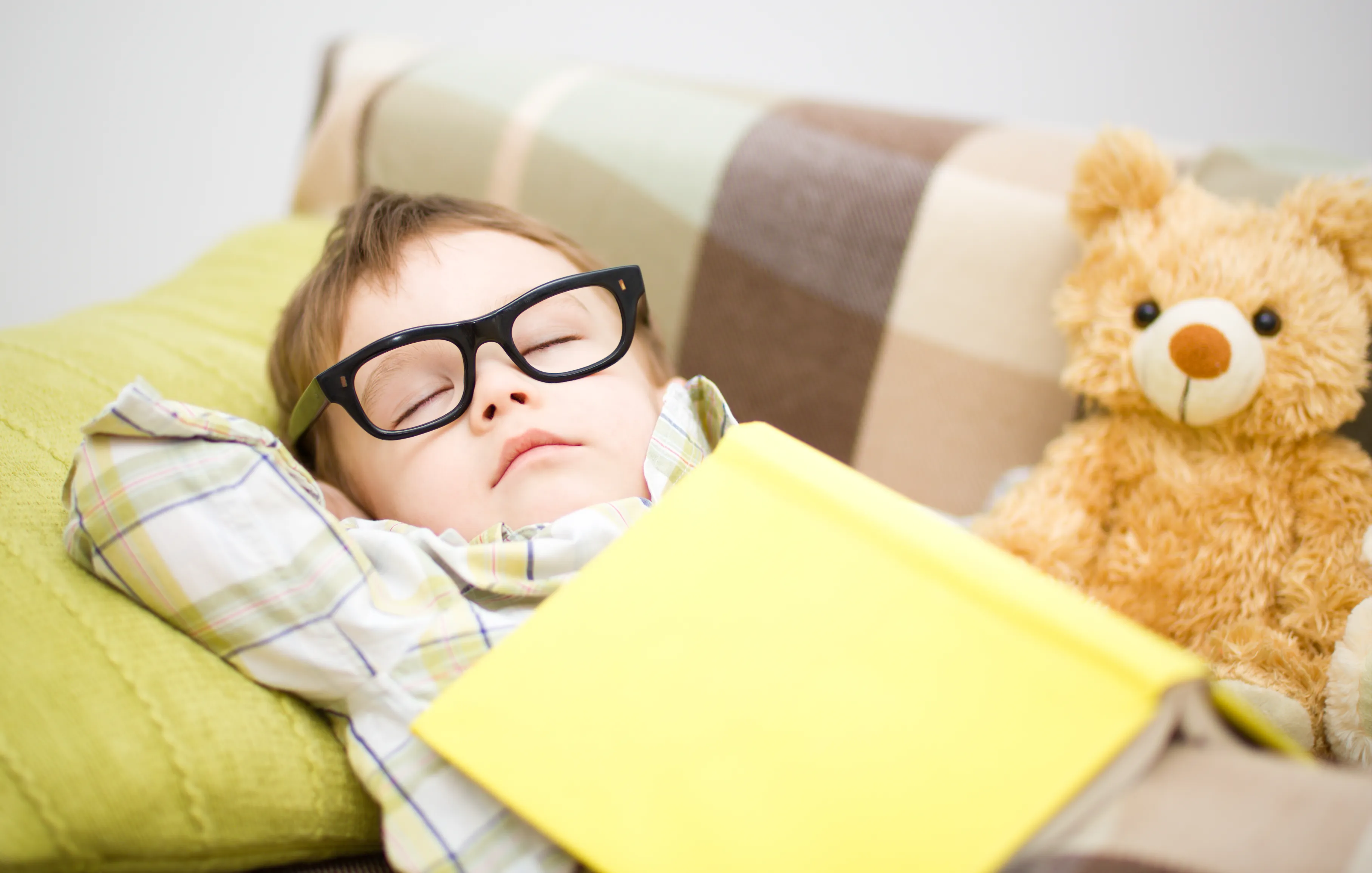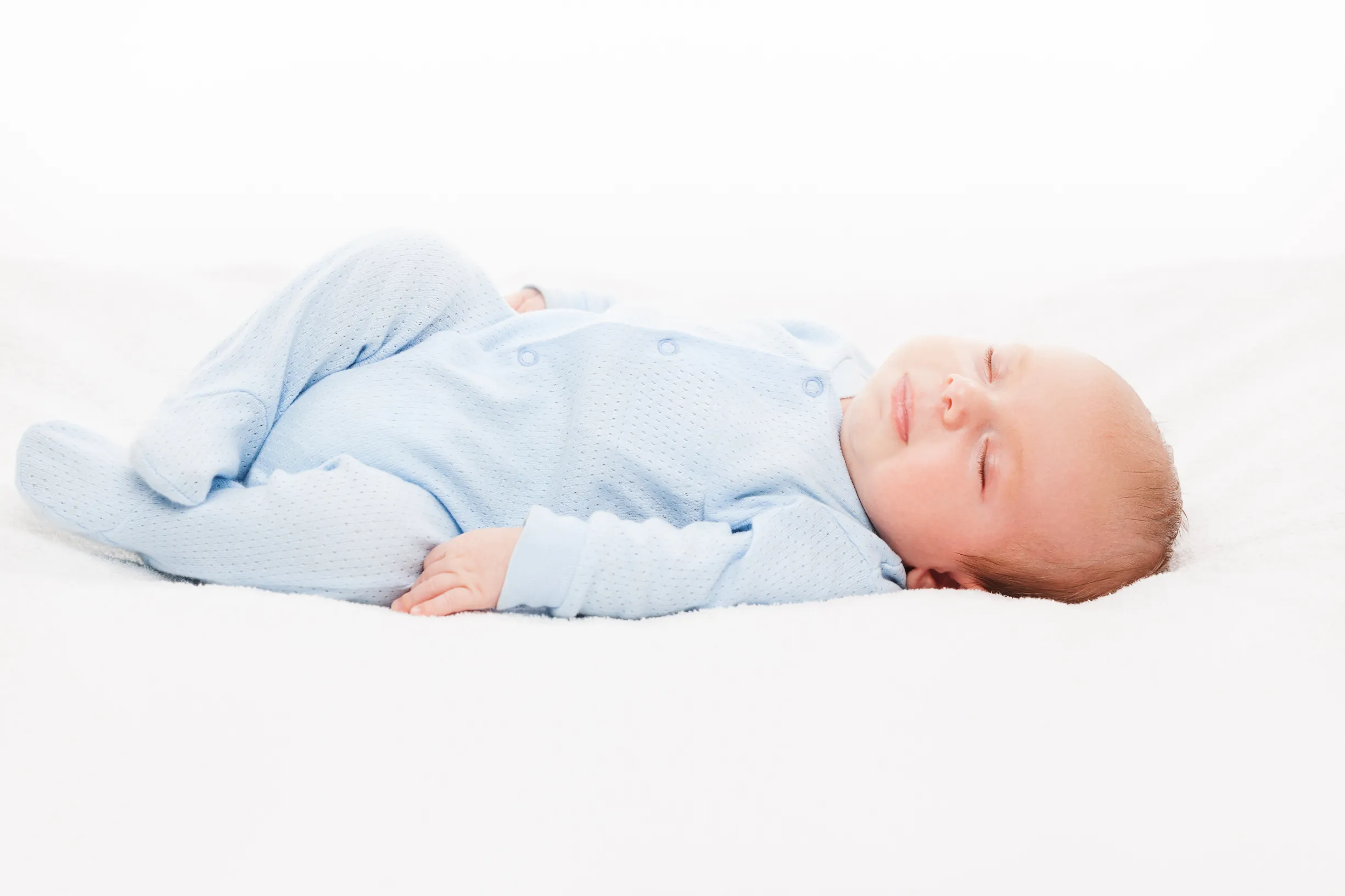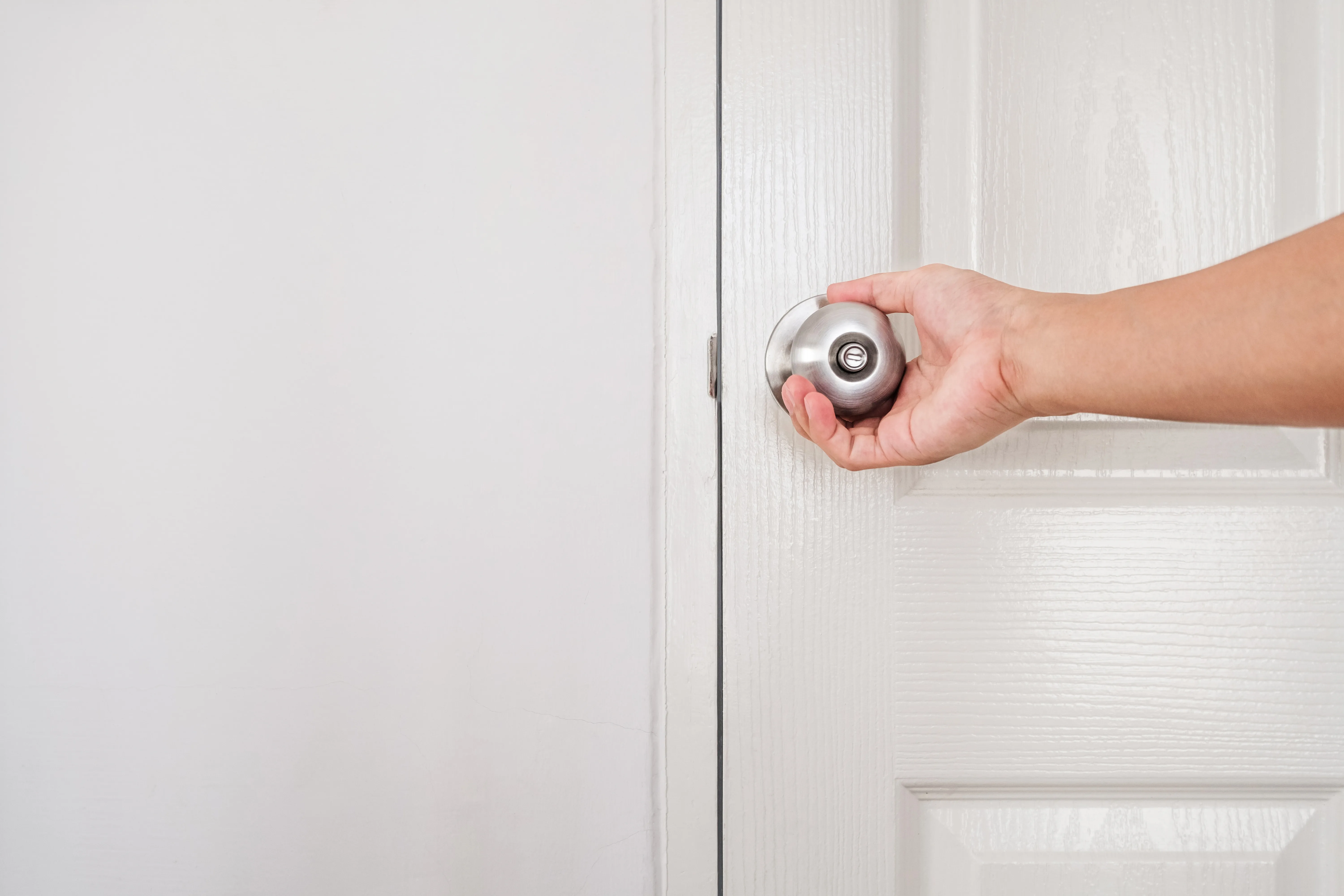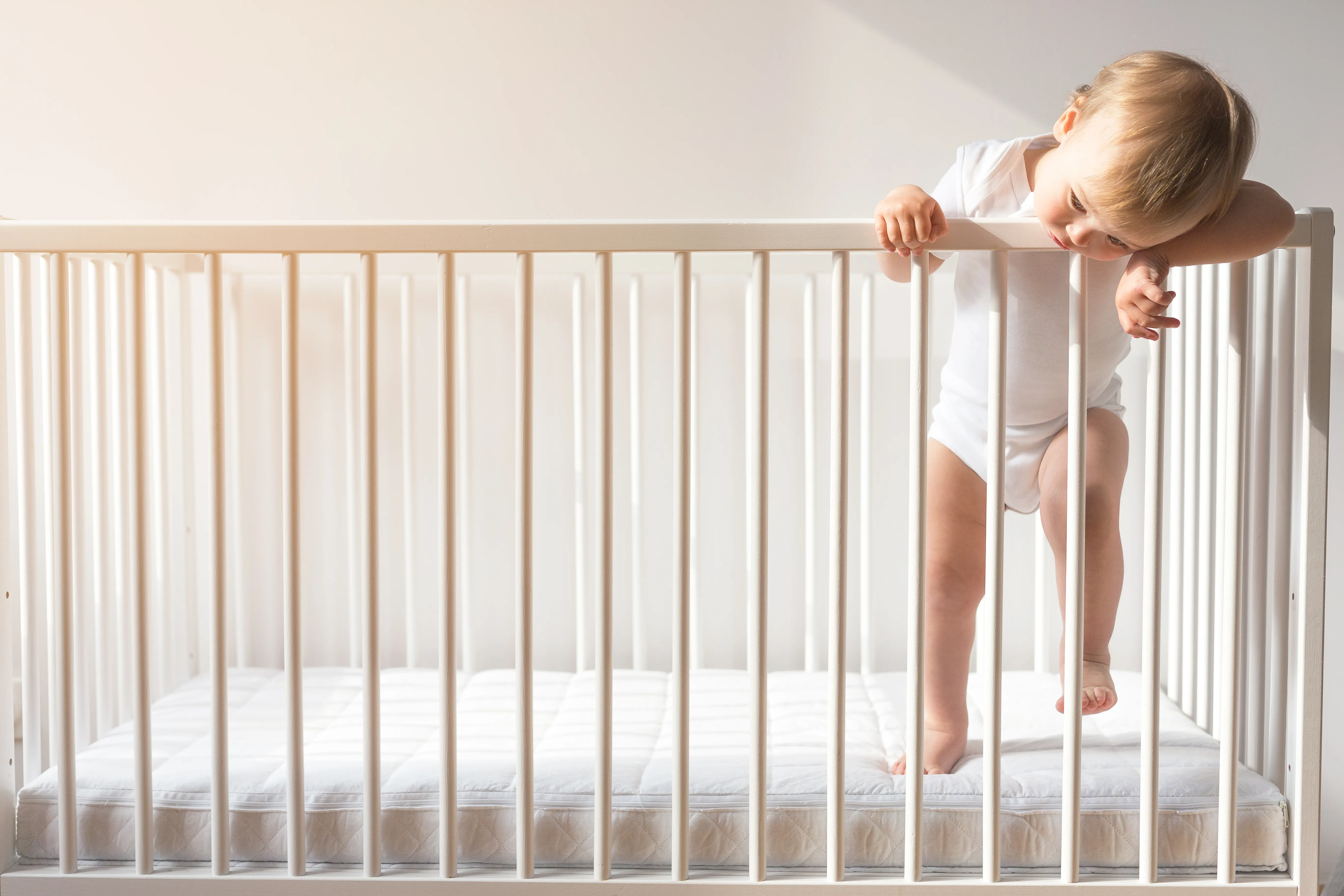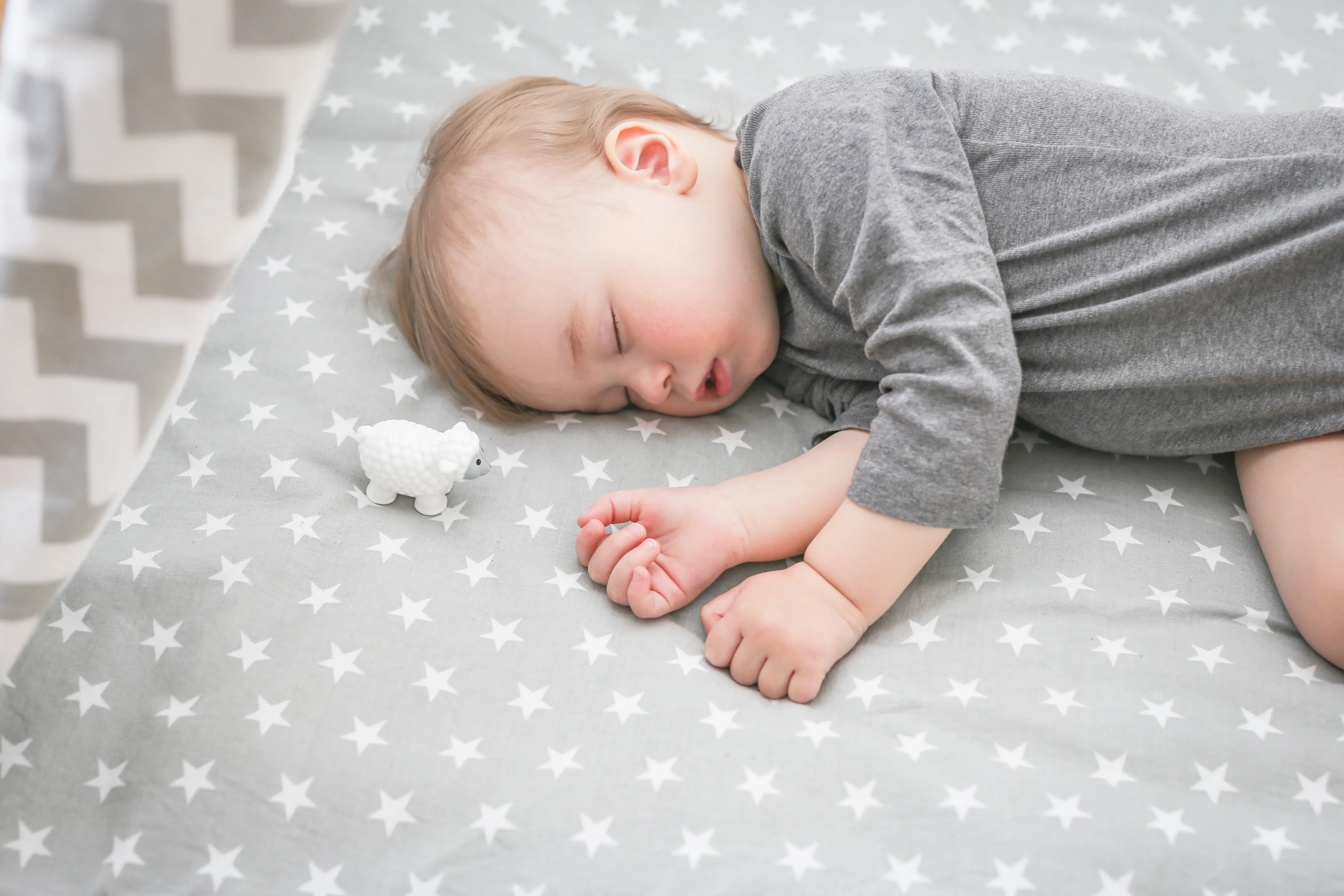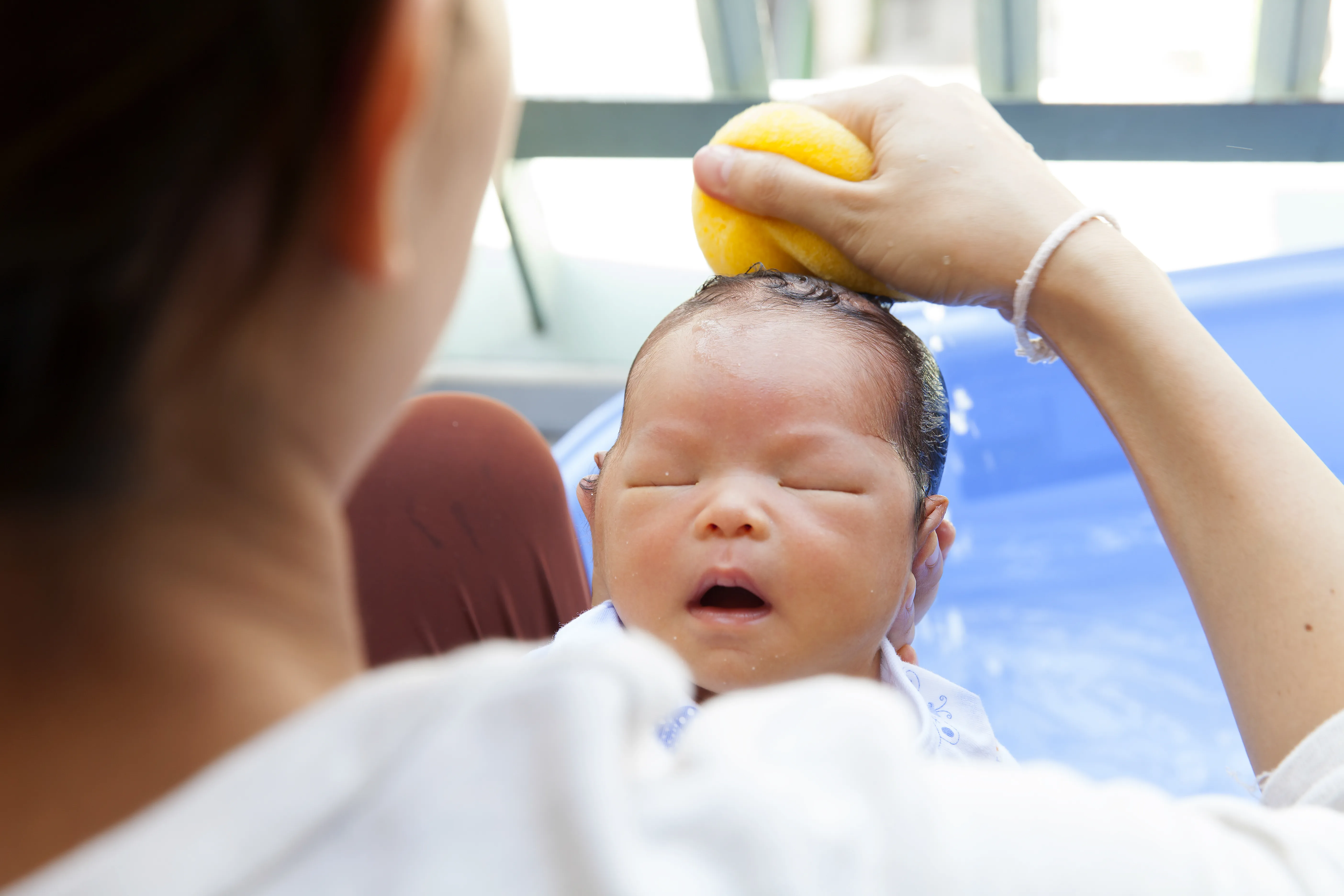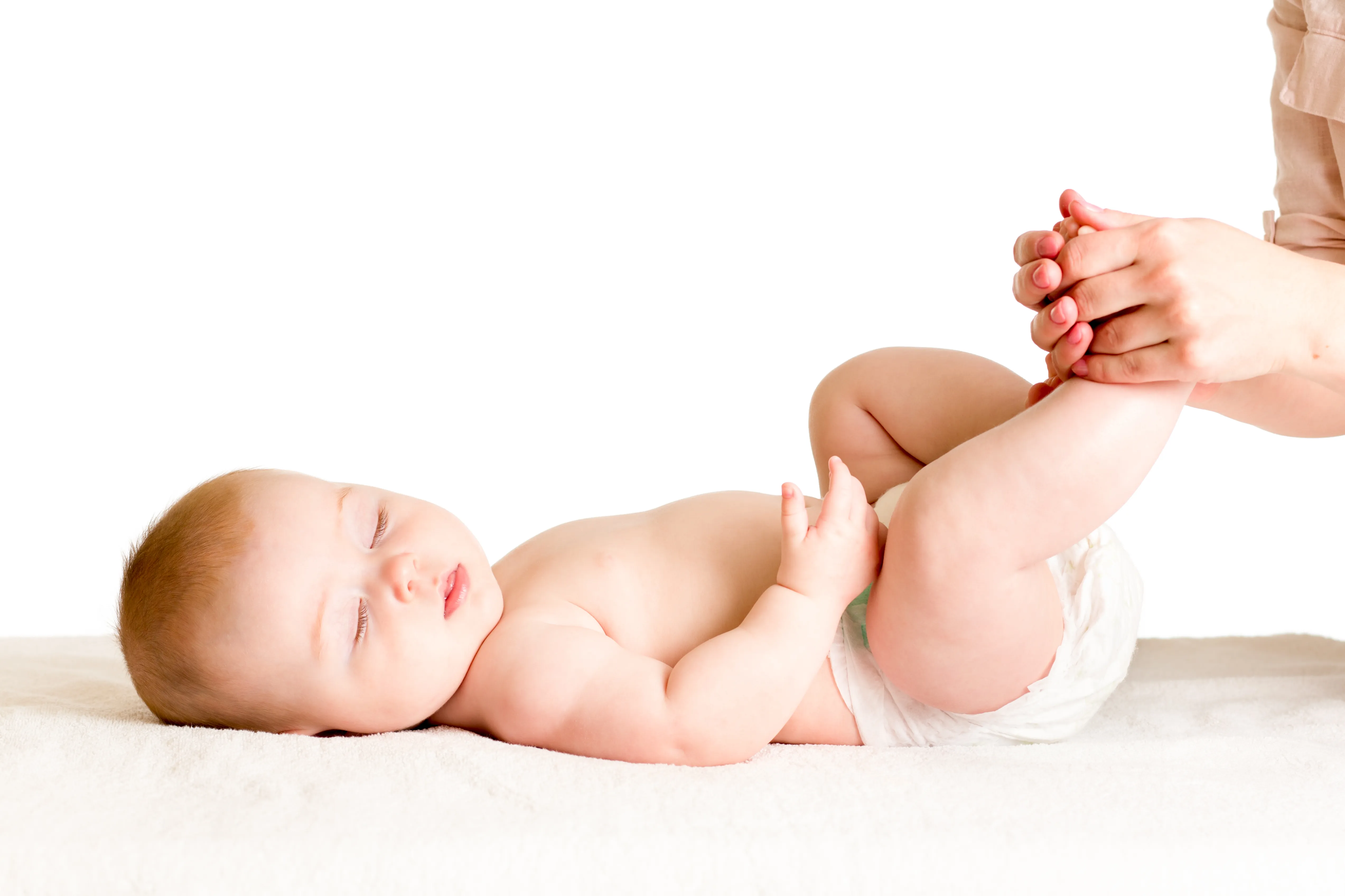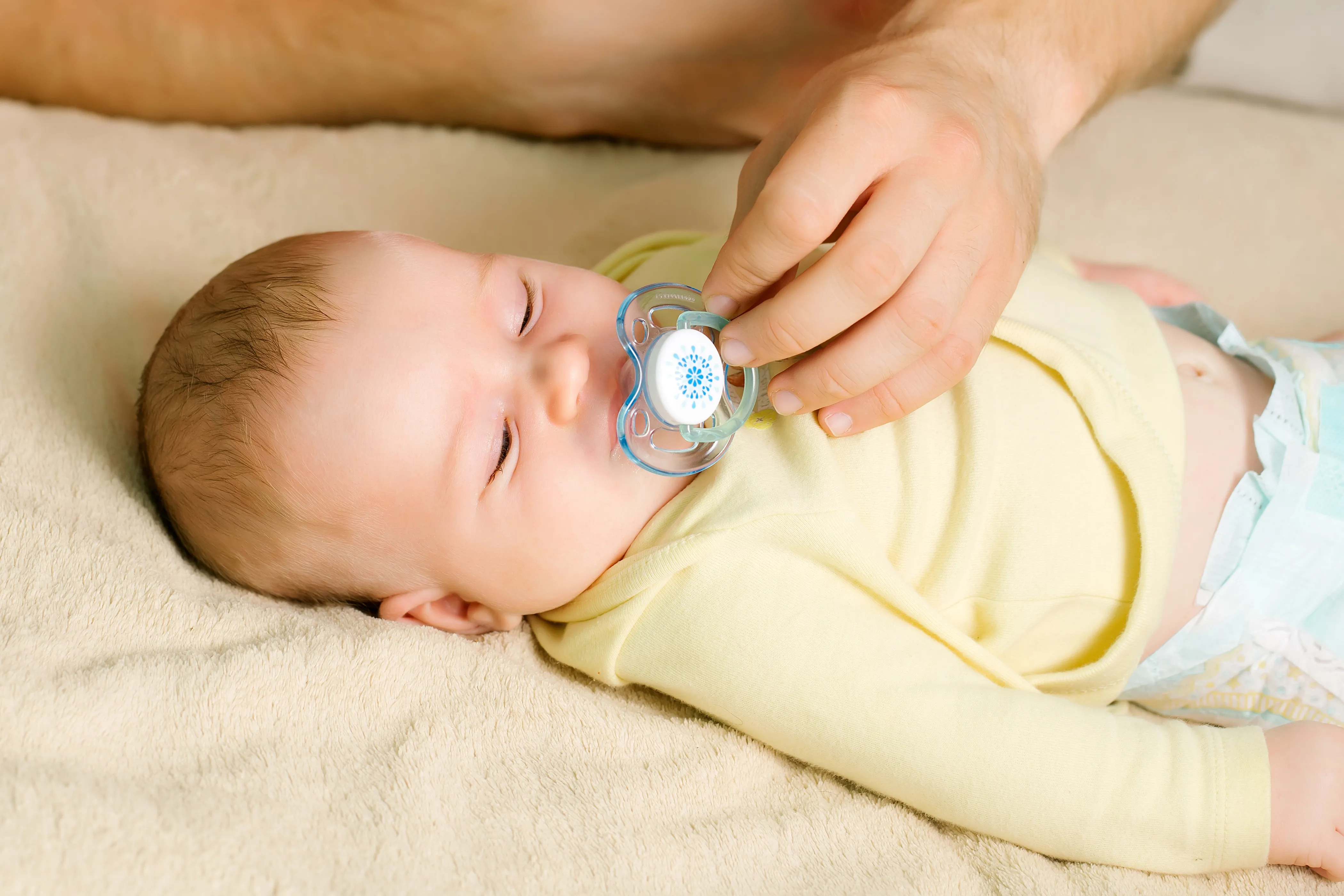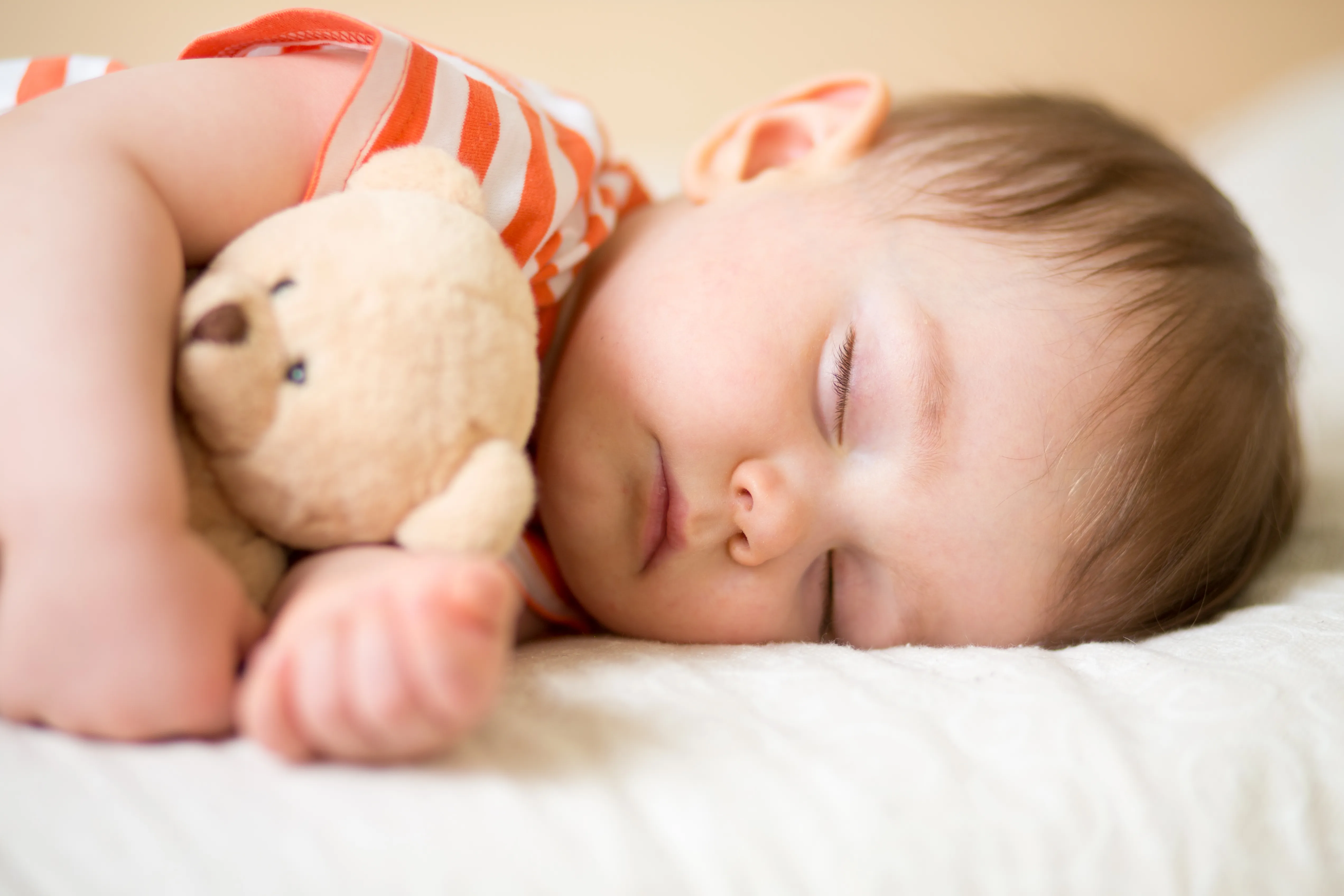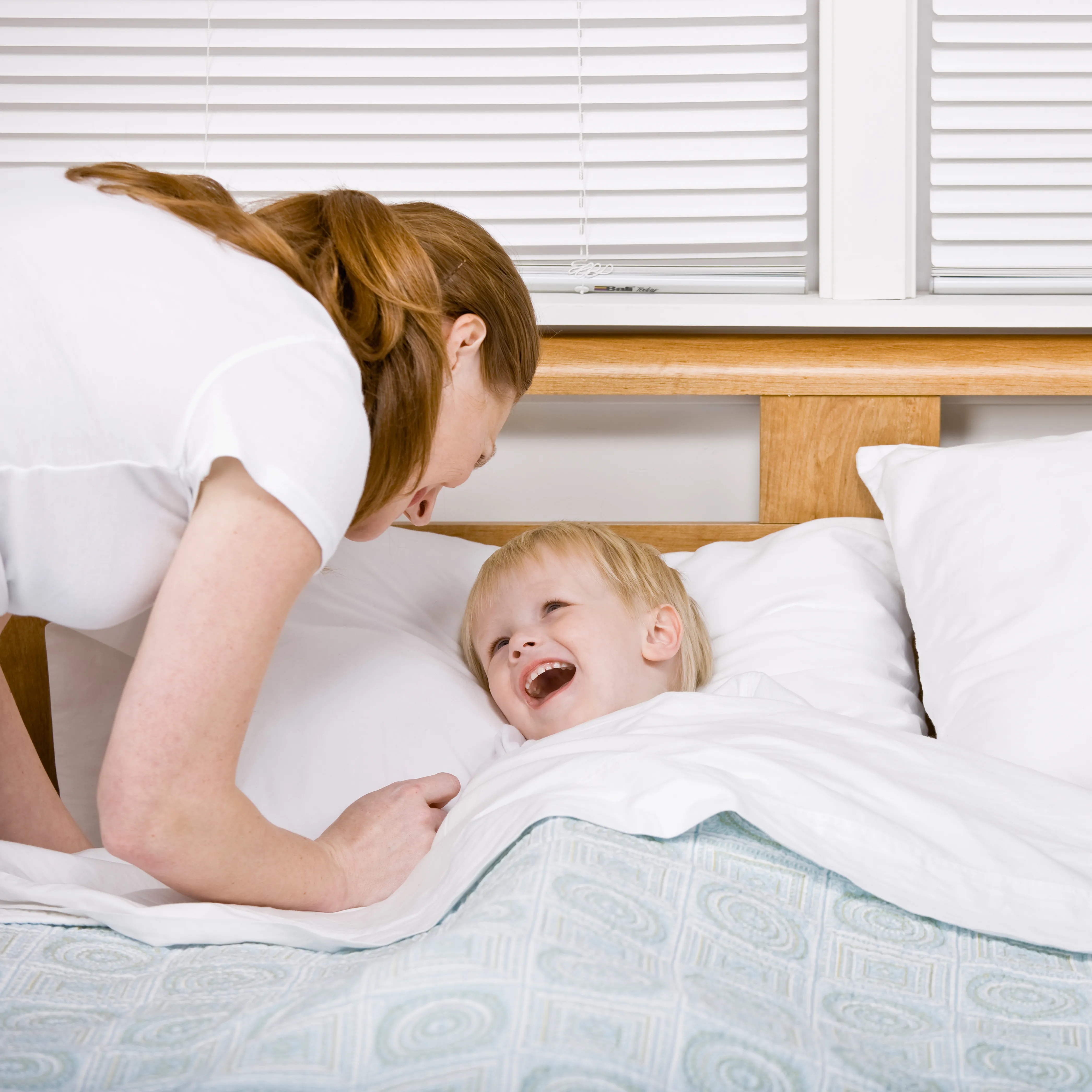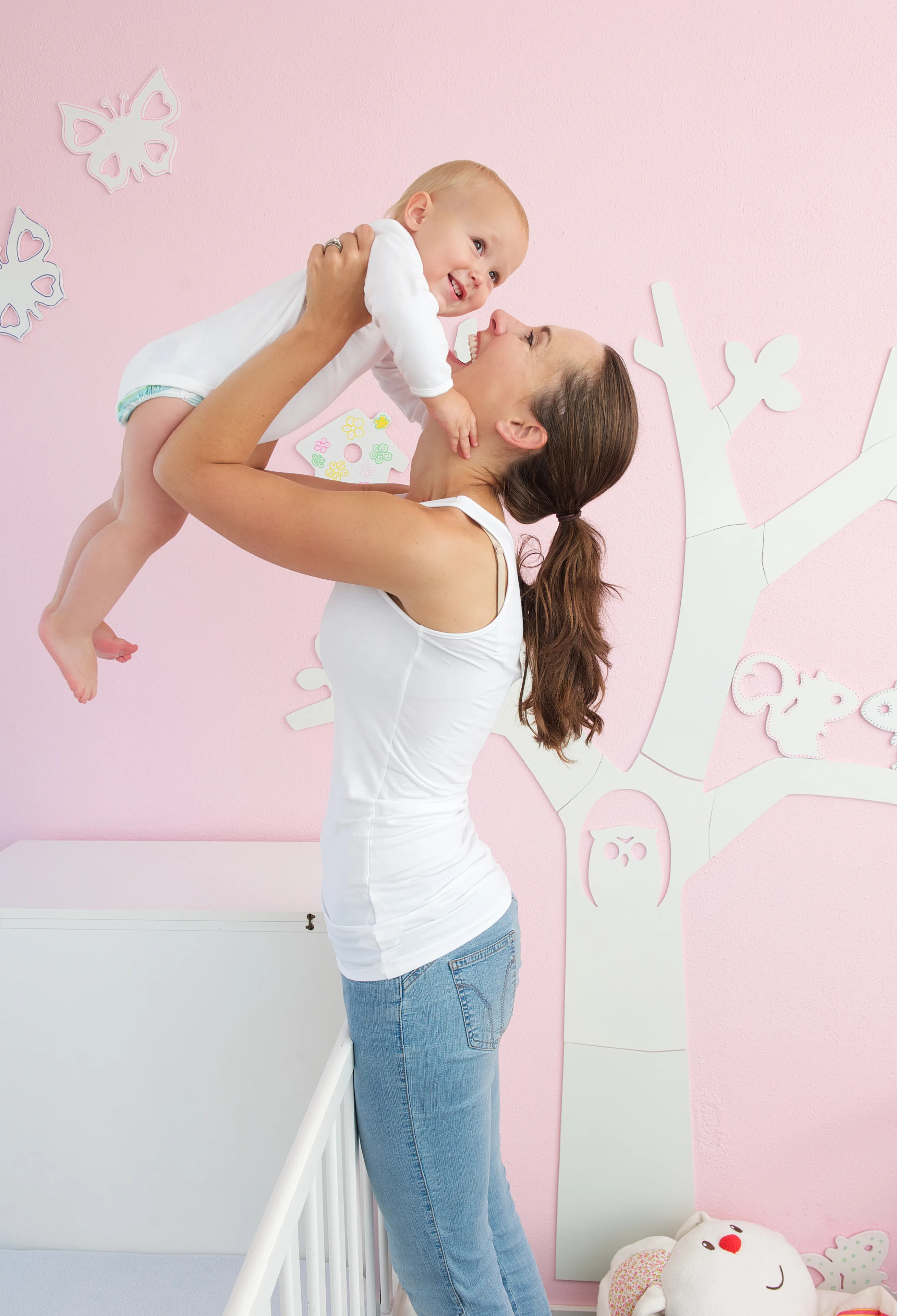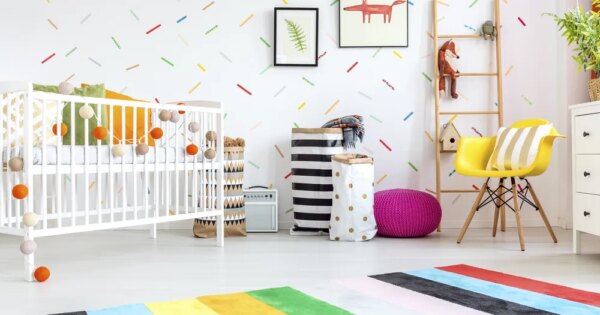Getting your little one to sleep and stay asleep can sometimes seem like an impossible task. We know there will be sleep regressions along the way, but every night should not feel like your child is going through one. There are countless tricks and tips that parents have shared on how to get your little one to sleep better, but since no two children are alike, it may take some trial and error to see what works best for you and your family. Hopefully, in the end you will have a well-slept child and well-slept parents to boot! It is important that your little one has a positive sleep association. Here are 20 ways to create an ideal sleep environment for your little one, and set the scene to help your toddler sleep better:
20. ESTABLISH A ROUTINE — AND STICK TO IT
Establishing a routine for your little one is a great way to help make the transition from awake time to sleep time seamless, by helping them calm down and get relaxed and ready for a good night’s rest. Aim for a bedtime routine that lasts around 45 minutes and includes a bath (unless there is a medical reason why not to). Part of a good routine is establishing an ideal bedtime. Many experts believe between 6:30 pm and 7:00 pm is an appropriate bedtime for little ones.
Early bedtime does not necessarily mean an early rise will follow — a good night’s sleep often results in a later wake-up time. Routines vary from family to family or even year to year as your family grows and temperaments change. Make sure whatever bedtime works for you, that you take into account your work schedule and your little one’s need to spend time with you. Once you establish a bedtime, stick to it whenever possible, and make sure that you don’t let your little one get overtired which can make getting to sleep very difficult.
19. NAPS ARE KEY
Never underestimate the power of a good nap! Naps are so important for both the mental and physical growth of your child. Some might think that by omitting naps, your little on will sleep more at night. However, the opposite is true. With little ones, sleep breeds sleep. So the better daytime naps they have, the better they will sleep at night. Just as routines are important at bedtime, they are equally important at nap time. Routines go a long way towards promoting good, healthy sleep. Develop a short, basic naptime routine (something you can do in about 5-10 minutes), and try to do it before every nap.
Timing and routine go hand-in-hand. You will first need to determine how many naps your little one needs, to establish an appropriate nap schedule. Toddlers require 12 to 14 hours of sleep, including an afternoon nap of 1 to 3 hours. Young toddlers may still be taking two shorter naps, but no matter what, naps should not occur too close to bedtime, as it will make it harder for them to fall asleep at night. Stick to the nap schedule as much as possible! Everyday is ideal, but at the very least stick to it 4-5 days each week.
18. TURN THE LIGHTS DOWN LOW
When you perform your child’s pre-sleep routine, use low lighting to facilitate the transition into relaxation and sleep. Turning the lights down low can help signal the brain to produce melatonin– the drowsy hormone that helps calm the body down in anticipation of sleep. Keep the lighting low in the bath and in their bedroom to help set the mood and signal to them it is time for sleep.
Keeping the room dark while they sleep is also important. Draw the curtains closed during sleep periods and drawn open, letting sunshine come through during daytime wake periods to help your little one understand the difference between day and night. During the summer months when the sun is out longer, blackout blinds are very handy to help keep the room dark, especially at bedtime and when the early morning sun rises.
17. KEEP THEM COMFORTABLE
Tune into your little ones needs. Are they comfortable? Are they too hot? Too cold? Ensuring that your little one is in a clean overnight diaper and snug single-layered cotton jammies, will help ensure that they are comfortable and ready for the sleep ahead of them. On cold winter months, use a sleep sack for extra warmth, if required. Once your child is over 18 months, you can provide them with a thin blanket, as suffocation and the risk of SIDS is no longer a threat.
Many experts recommend that the room temperature of where your baby sleeps should be kept between 68-72 degrees Fahrenheit (20-22 degrees Celsius). Because most bedrooms don’t have their own thermostat, you can use an indoor thermometer to help track the rooms temperature. Some baby monitors also have thermostat capabilities, which is nice. We like to keep a Dyson heat/cool fan in our son’s room – so if the temperature drops below 20 degrees it will heat back up, and on warmer nights the fan helps keep the room cool. Very handy!
16. UNDERSTAND YOUR LITTLE ONES CUES
It is so important to be aware of your child’s sleep cues. This will ensure that you put them to bed with perfect timing — not too early and not too late, helping them to fall asleep more easily and stay asleep for longer periods of time. Since no two babies are alike, their sleepy signs and overtired signs will differ from one another, but some of the most common sleep cues are: slightly quieting or slowing down, wanting to nurse, asking for a bottle or pacifier or lovey, a slight staring off, decreased activity, slower motion, less vocal, disinterested in surroundings, eyelids drooping, yawning, less movement, glazed over eyes, less socially responsive smiling, less engaging, rubbing eyes, irritability, pulling hair, thumb sucking, batting at ears and crankiness.
Ideally you will already be in the process of getting your little one to go for sleep when you first notice their sleep cues so that you prevent over tiredness. Again, this is where having some sort of routine can be very helpful so that you will know when to anticipate tiredness and their sleep cues. Sleep cues can change over time, and it isn’t too uncommon for them to become more subtle or disappear as your child gets older. So you will have to pay attention and understand your little ones cues, whatever they may be. An overtired baby can be a nightmare to put down!
15. WAIT A MINUTE AND LET YOUR BABY SETTLE THEMSELF
When our baby is fussing, we have to fight the urge to quickly run to their bedside to comfort them. When we go into their room to comfort and settle them, we are essentially becoming their sleep crutch. They are smart and they know how to manipulate us when they want. This is why it becomes so important to set boundaries. Boundaries can be set either through sleep training, or just by starting to putting your baby down to sleep when they are tired but not asleep. This will help them learn the important skill of getting to sleep on their own. If your child does fuss as they are going down, or wake up and start fussing or crying, try to give them a moment to calm themself and get back to sleep.
Letting them have a moment to settle them self is so important in preventing you from always having to be their sleep crutch. Learning to fall asleep on their own is a very important skill, and the sooner you can teach them this, the easier it should be going forward. Some parents have tried more intensive sleep training such as the ‘cry it out’ method. It can be very difficult as a parent, and may take more than a week for your child to learn — but it will get better and your little one will learn that they are capable to do it on their own!
14. CRIB SAFETY
Crib Safety guidelines have changed greatly over the years. The guidelines our parents followed when we were children are quite different from the guidelines we have to follow now with our children. The guidelines also vary depending on whether your child is an infant or a toddler. When your child reaches toddler age (18 months to 3 years), the guidelines for sleep safety become less strict than they were when your child was infant age, since they are no longer at risk for SIDS (Sudden Infant Death Syndrome).
At 18 months old, blankets, pillows and stuffed animals are considered to no longer pose a threat to your child.
You may provide them with a thin blanket and a small pillow, however still steer clear of big stuffed animals and other potential hazards. At any age, make sure your child’ crib or bed is out of arm’s reach of any objects like window blind pull, curtains, or electrical cords, or objects that they are able to pull into their bed like picture frames or mobiles. Speaking of beds — many new parents may ask: when should I move my toddler from a crib to a bed? You should start transitioning to a toddler bed or a twin bed with a side rail when your little one reaches 35 inches tall. Until then, if your little one is a climber, keep their crib mattress on the lowest setting to make it harder for them to get out. Avoid putting anything in their crib that they could step on to help climb out, like stuffed toys or crib bumpers. New parents may also ask: does my toddler need to sleep on their back? The answer is no! Not if they don’t want to. You can let them fall asleep on their back, stomach or side, as after their 1st birthday stomach sleeping no longer poses a risk for suffocation. Before 1 year of age, your baby should sleep alone in an empty crib. Keep loose bedding, bumpers, and toys out of the crib as this can increase your baby’s risk of suffocation and entrapment. Providing a firm sleep surface for your baby, free of potential hazards, is a must!
13. AVOID SLEEP-DISRUPTING STIMULATION
As much as you love staring into their sweet tired eyes, as they are fighting to stay awake, looking directly into their eyes can actually prevent you from helping them fall asleep. When you are looking in their eyes, it causes a chemical change in their brain by stimulating the release of hormones (Oxytocin), which excites your baby, causing their breathing to accelerate and their heart rate to increase with excitement. Depending on their age they may suddenly find more energy because they think that you want to play! This not only may slow down the getting to sleep process, but when you finally do get them to sleep, they will be more likely to wake throughout the night because of that extra stimulation they had prior to their bedtime.
Instead, use lots of eye contact throughout the daytime when your little one is active and awake. When nighttime falls, avoid the temptation to gaze into their eyes. If your little one wakes during the night, remember to again avoid eye contact and additional avoid talking, singing, excessive motion or anything else that will stimulate them. Keep it all business. Whether it is nap time or bedtime, the more interaction that takes place between you and your baby, the more motivation they will have to get up and stay up. So keep it low-key. Keep your gaze on their belly and soothe them back to sleep with a gentle touch and soft voice, and save direct eye contact for the daytime!
12. WHITE NOISE
Considered a must in many households, many parents first purchase a white noise machine to use for newborns to mimic the noisy conditions they would have heard in utero. Some white noise machines have a heartbeat setting mimicking the mother, which can be such a comforting thing for newborns. A quiet night can actually be quite frightening for a newborn who is used to hearing all the sounds that go on in mommy’s belly. For many, white noise machines will soon become your best friend — blocking out ambient noises and allowing them to sleep through any other noises going on in the house while baby is trying to sleep. Babies may also be able to fall asleep faster with the white noise in the background.
White noise machines, despite their potential benefits, do have some potential cons. White noise machines should not exceed the recommended noise limits of 50 decibels. It could increase the likelihood of hearing problems. Try to find a noise machine that allows you to lower the volume to within the acceptable range. Furthermore, it is recommended that they should be places at least 7 feet (200 cm) away from your baby’s crib. Lastly, white noise machines can be problematic if your little one becomes reliant on it. If they are in a situation where they don’t have the sound machine, it can make it very difficult for them to get to sleep without it.
11. RUB-A-DUB-DUB CALM THEM DOWN IN THE TUB
Having a bath before bed can be a great way to signal to your little one that it is time for sleep. Bathing your toddler 2-3 times a week is enough to keep them clean, but if your toddler gets dirty from playing, or simply enjoys bath time, you can bath them more often — once a day is perfectly fine, and will make a great addition to your child’s bedtime routine. If you have concerns about their skin drying out, avoid using soap and rather, use a gentle non-soap cleanser.
The ideal water temperature is between 37 and 38 degrees Celsius. A warm bath will soothe their little muscles and relax their body, helping them sleep at night. Playing soft music or turning the lights down low, are great ways to set the mood and better prepare them for sleep. Some parents ask: is it safe to put Epsom salts in my child’s bath? Epsom salt can help improve muscle and nerve function, reduce inflammation and improve blood flow and oxygenation in the body. They are also great for the skin and provide some added minerals while not drying out the skin as much as soaping up daily will. However, if you choose to add some to your little ones bath, you must ensure that your little one doesn’t drink the bath water. Epsom salts are a laxative, and if your child swallows any water it could lead to increased bowel movements. Always consult your pediatrician before regularly using Epsom salts in your child’s bath.
10. BEDTIME BABY MASSAGE
Massaging your little one is a lovely way to express your love and care for your baby, and can relax and soothe them and help them sleep. Massage has many added benefits for your little one, including stimulating growth-promoting hormones, boosting immunity, enhancing neurological development, relieving stress, aiding digestion, improving circulation, and when your child is teething — it can even help ease their teething pain.
Massage is a great way to bond with your baby, and it may also help to relax you too! Baby massages should consist of gentle, rhythmic stroking of your baby’s body with your hands. You can use oils or lotions to help your hands glide smoothly over their skin. The soothing strokes will stimulate the production of oxytocin — the feel-good hormone — in both you and your little one. All you need is 10-15 minutes! A 15 minute baby massage is proven to help little ones fall asleep faster. Try starting after a diaper change as part of your bedtime ritual.
9. FRAGRANCE
Lavender has many calming and sedative effects. Studies show that it’s scent actually serves to decrease the activity of the nervous system, helping to lull you into a sleep ready state. If a baby massage is a part of your child’s bedtime routine, try adding a drop of lavender essential oil to your lotion or oil of choice to help relax your little one and encourage sleep. It is not advised to use essential oils on babies less than 3 months of age because their skin is not mature yet and is therefore more permeable and sensitive.
When you use any essential oil, it should always be diluted for use with children. Do not exceed 1-2 drops of essential oil per ounce of carrier oil or lotion. Additionally, always keep away from their faces. When appropriately diluted the following essential oils can be used on infants, but always consult your pediatrician before you incorporate essential oils into your child’s bedtime routine.
8. SING
Incorporating a song or two into your child’s bedtime routine will not only help lull them into sleep, but it is also a great opportunity to help your child learn as well. Our children learn how to talk from listening to us speak or sing, and some children will even sing before they start talking. Songs help children learn, especially if they hear the same songs over and over again. We like to sing the ABC’s every night, and it has certainly helped our little one to learn the alphabet!
Singing to your child will make a great addition to your child’s bedtime routine, and is something you can both look forward to. Singing is shown to reduce anxiety and feelings of pain in babies and children, and just like any part of their pre-sleep routine, it helps them understand that sleep is coming and it will help their bodies wind-down in preparation for it. So warm up your vocal chords and try adding a soft song or lullaby to your child’s sleep rituals.
7. OFFER A BEDTIME SNACK
A child’s stomach is small, making it normal for them to eat smaller meals more frequently throughout the day. Offering your child a bedtime snack will help ensure they sleep better and don’t wake in the middle of the night hungry and asking for food. Additionally, they will wake more alert and less hungry the next morning. Children under two, especially if they are a light eater, should have a bedtime snack within 30 minutes of their bedtime.
Choosing the right bedtime snack is also important. Certain foods can help further promote good sleep and falling asleep faster. Foods containing tryptophan when paired with a carbohydrate, will boost the production of serotonin which will help your child fall asleep faster.
6. TO CO-SLEEP, OR NOT TO CO-SLEEP
For parents who spend their days apart from their children, they may see co-sleeping as precious time spent together. Sweet snuggles and cuddling alongside your little one can be such a nice bonding experience. Being physically close and the power of touch creates a very special closeness between a parent and their child. While potential benefits to a child who co-sleeps includes: reduced stress, falling asleep faster, promotion of emotional growth, and more (longer) sleep — some parents still choose to resist co-sleeping from the get-go for a number of reasons.
One of the main reasons parents choose not to co-sleep is that they do not want their child to become dependent on them being there in order to fall asleep. This can be a big issue, and if you aren’t willing to make this part of your nighttime routine, it may not be sustainable for your family. We have stuck with ‘your bed is your bed, my bed is my bed’ from the beginning, and it seems to have worked well for us. But do what is best for you and your family! It is an individual call that parents must make.
5. ACTIVE DAYS LEAD TO RESTFUL NIGHTS
Ensuring your little one gets plenty of fresh air, sunshine and exercise during the day, can be a great way to promote a night of restful sleep for your toddler. If your child is active during the day, the chances are they will be worn out by the time bedtime rolls around. Plenty of activity during the day nearly always results in a nap, which as we know, napping during the day leads to better sleep at night too (provided the nap isn’t too close to their bedtime).
There is nothing better than fresh air for children, so get outdoors with your little one! Pack a picnic and take them to the park, or for a swim, play tag, or even engage in a tickle war — anything to help them expend some of their seemingly never ending supply of energy. Laughter is also essential — it transforms the body chemistry to reduce stress hormones (for both you and your child). Expending their emotional energy through laughter is equally important, and is proven to help children fall asleep and stay asleep.
4. OFFER A SOOTHER
Did you know that during infancy, a pacifier may help reduce the risk of SIDS (Sudden Infant Death Syndrome)? If you are breastfeeding, parents are usually advised to wait until baby is 3 to 4 weeks old and you’ve established an effective nursing routine. My son never really took to using a soother, but offering a pacifier during naps or nighttime while your little one is asleep, might lower the risk of SIDS by more than half.
In infancy, babies have a natural need to suck. Breastfeeding or bottle feeding your baby will usually satisfy their need to suck, however a pacifier can help so long as it does not actually replace their mealtime. Pacifiers also can help encourage your little one to self soothe, control their feelings, relax, and make them feel more secure. When it comes to pacifier use into toddler ages — the jury is still out. There seems to be a lot of varying opinions on the matter on whether it is a good thing or a bad thing. Some parents advocate ‘child lead use’ at bedtime. Basically, make sure your little one has access to a pacifier should they need it. Keep a little stash in the same corner of the crib each night for your little one to grab as needed. Pediatric dentists recommend limiting pacifier time once a child is 2 and eliminating it by age 4 to avoid dental problems.
3. OFFER A LOVEY
Have you ever heard the term ‘lovey’ before? A lovey is simply a security (or comfort) object that your little one can bring with them to bed. It is essentially a sleep time buddy for your little one. Although not every baby or toddler attaches to an object like this, many do. A lovey can be anything that is safe for your little one to have at sleep time.
Most common comfort items include blankets or stuffed animals. However, children have been know to pick some pretty obscure seeming loveys — but as long as it is safe and it works, there is no harm in using what works. For parents who are sleep training and teaching their little one to self-soothe without you in the room, a lovey can be a lifesaver. When you are travelling they are great to bring along, and will go a long way towards helping your little one sleep in an unfamiliar surrounding. A lovey can also help during sleep regressions. When your little one is going through physical or developmental changes, it can be a very comforting and familiar thing to have around!
2. TALK TO YOUR CHILD WHY SLEEP IS IMPORTANT
One of the most exciting parts of watching our little ones grow up, is when they are able to start interacting more and verbally communicating with you. When they are younger, there is a lot of one-way conversations going on — but when they reach toddler age, and they are becoming better communicators, we can start to have slightly more grown-up conversations with them.
We like to talk about sleep and why it is important. Whether we are trying to get our little one to nap or go to bed, we communicate with him that it is time for rest, and that it is important that he get some rest so he grows big and strong, and so he wakes up and has more energy to play again. We obviously don’t go into the hard facts of why sleep is important — we just want to try to involve him in the process and make him understand that is good for him, and that the sooner he falls asleep, the sooner he will get to wake up and be ready to play again! Some parents also like to use stuffed animals to teach their little ones about sleep. Your child can participate in putting the stuffed animal down for a nap or to bed — it certainly won’t hurt to give either of this things a try to see if it helps your toddler sleep better!
1. ACKNOWLEDGE YOUR CHILD WHEN THEY SLEEP WELL
Who doesn’t like positive reinforcement? Tell your little one how proud you are of them as they make progress in learning to sleep by themself, when they have a good nap, or when they successfully sleep through the night. A little motivation can go a long way. If you try to do skits with stuffed animals, be sure to have the stuffed animal parents be proud and encouraging too!
It can be challenging teaching our toddler to feel comfortable falling asleep without your close physical proximity, but with some of these tips and tricks you will eventually get them to the point where they are able to self sooth and fall fast asleep as soon as their little heads hit the pillow. Sure, there will be regressions that come up, but no efforts are wasted, as you will be doing your best job as a parent to create healthy sleeping habits that they will carry with them into their adolescence and ultimately into their adulthood.
